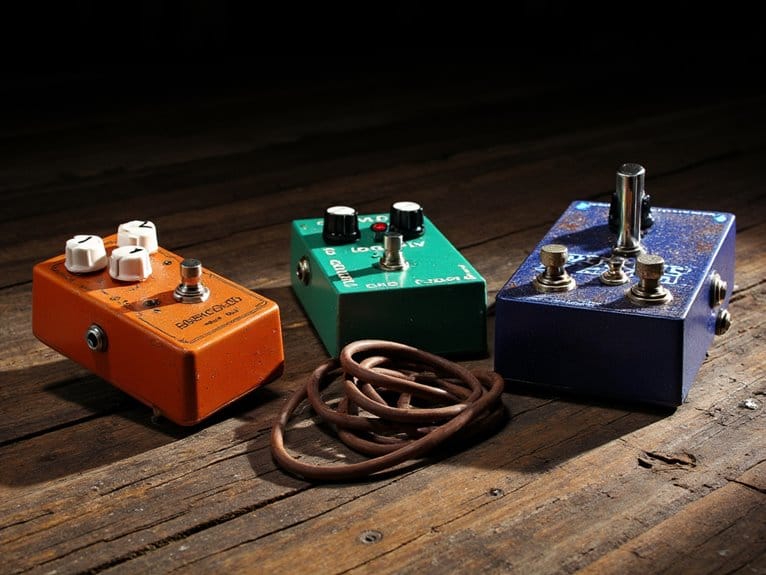What Is the Best Free Daw for Beginners?
For beginners, the best free DAW depends on specific production needs and workflow. Cakewalk Sonar Home Studio offers a robust feature set, while Reaper's customizable interface and strong MIDI editing capabilities make it a popular choice. Audacity's simplicity and multitrack recording support make it ideal for podcasting and voice-overs. LMMS and Ocenaudio are also worth considering. When selecting a DAW, prioritize user-friendly interfaces, robust MIDI editing, and automation capabilities. Don't settle for subpar software just because it's free; instead, identify the perfect fit for your creative vision, and take the first step towards producing high-quality tracks that exceed your wildest expectations.
We are supported by our audience. When you purchase through links on our site, we may earn an affiliate commission, at no extra cost for you. Learn more.
Top Free DAWs for Beginners
While many commercial DAWs come with a hefty price tag, several high-quality free alternatives cater specifically to beginners, offering a range of features and user-friendly interfaces that allow new producers to plunge into music production without breaking the bank. One standout option is Cakewalk Sonar Home Studio, a stripped-down version of the professional-grade Sonar Platinum. It boasts a robust feature set, including a 64-bit mix engine and VST3 support. Another contender is Reaper, a lightweight DAW that's surprisingly feature-rich, with a customizable interface and strong MIDI editing capabilities. Finally, Audacity, a popular open-source option, offers a simple, intuitive workflow and supports multitrack recording.
Features to Look for in a DAW
When selecting a DAW, novice producers should prioritize features that facilitate a seamless creative workflow, including a user-friendly interface, robust MIDI editing capabilities, and support for VST plugins. MIDI editing is vital, as it allows for precise control over virtual instruments and effects. Look for DAWs that offer advanced MIDI editing tools, such as note editing, velocity editing, and pitch bending. Additionally, VST plugin support is essential for expanding your sonic palette. Verify that the DAW can handle a wide range of plugins, including third-party offerings. Other key features to weigh include automation capabilities, effects processing, and audio editing tools. Don't settle for a DAW that skimps on these essential features – your productions will suffer as a result.
A user-friendly interface is more than just a nicety, as it directly impacts the speed at which you can transform your creative vision into a tangible product, making it a critical aspect of a DAW's overall design. A cluttered and convoluted UI can lead to frustration, wasted time, and a higher risk of abandoning your project altogether. A well-designed interface, on the other hand, should provide intuitive navigation, clear labeling, and logical grouping of features. Look for a DAW that utilizes a customizable layout, allowing you to tailor the workspace to your specific needs. A responsive and adaptive UI is also essential, ensuring that your creative flow remains uninterrupted.
Audio Editing and Mixing Tools
Most remarkably, a DAW's audio editing and mixing tools form the backbone of its functionality, providing an exhaustive suite of processors, effects, and routing options that enable users to sculpt and refine their audio signals with precision. From subtle EQ tweaks to drastic compression squashes, these tools empower producers to coax the perfect tone from their tracks. Let's not forget the array of plugins at your disposal, offering everything from warm, analog-inspired distortion to futuristic, algorithmic reverb. And then, of course, there's the routing – a complex web of buses, sends, and returns that can either be your best friend or your worst nightmare, depending on your organizational skills.
Best Free DAW for Your Needs
With a firm grasp on the audio editing and mixing tools at your disposal, the next logical step is to identify the best free DAW that aligns with your specific production needs, workflow, and creative vision. Don't waste your time with a DAW that's not optimized for your genre or style. If you're producing electronic music, you'll want a DAW with robust MIDI editing capabilities, such as LMMS or Cakewalk Sonar Home Studio. For podcasting or voice-over work, Audacity or Ocenaudio might be the way to go. And if you're a beginner, you might want a DAW with a more intuitive interface, like GarageBand or Reaper. Do your research, and don't settle for a subpar DAW just because it's free. Your music (or podcast) deserves better.






